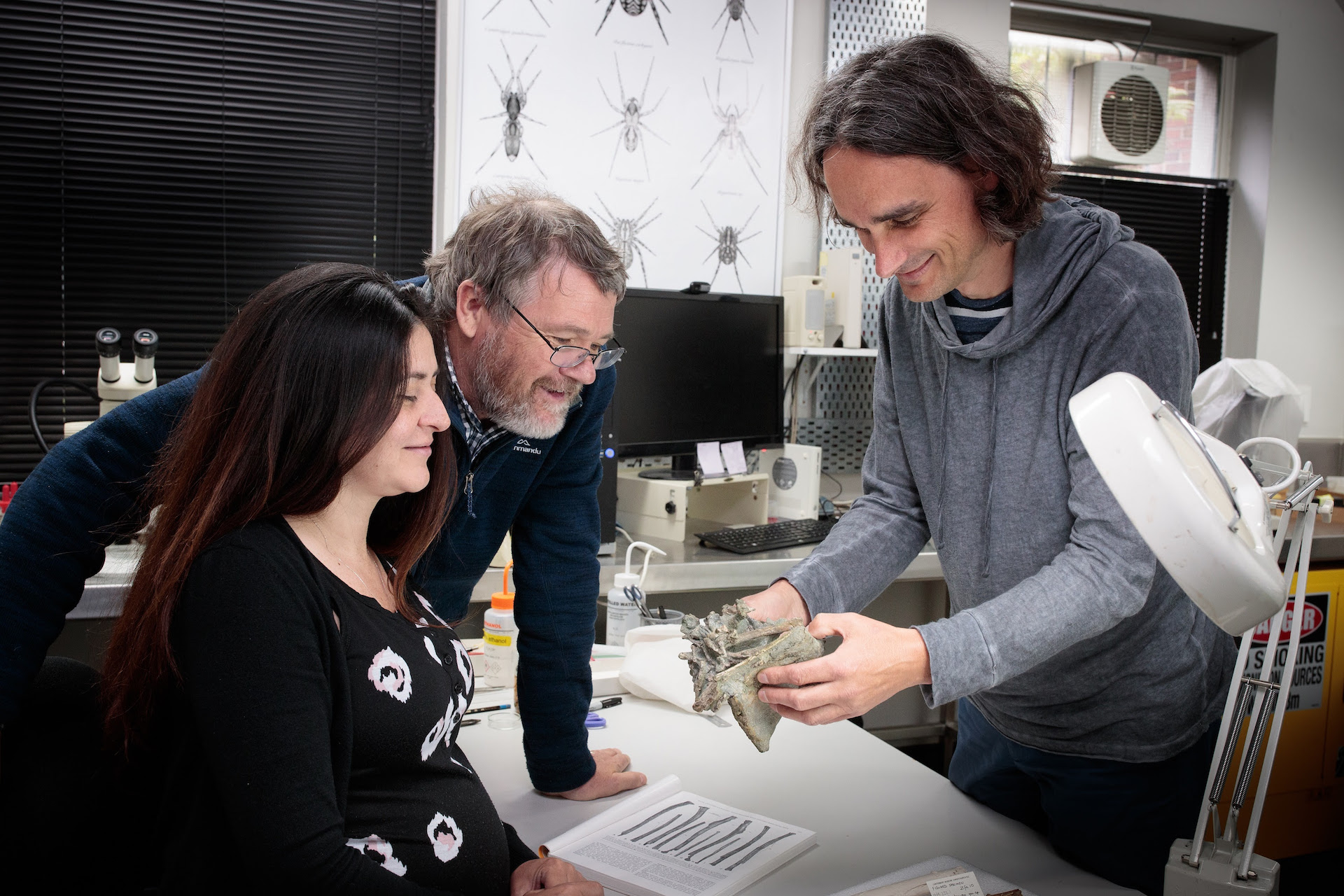Newly Discovered 'Monster' Penguin Was As Tall As an Adult Human
This ancient penguin chilled out in New Zealand shortly after the dinosaurs went extinct.

Fish swam for their lives when they encountered a forbidding, ancient "monster" penguin that would have towered over today's largest penguin, the emperor, a new study finds.
The newly described aquatic beast, dubbed Crossvallia waiparensis, measured 5 feet, 3 inches (1.6 meters) tall, about the height of an adult woman. It weighed up to 176 lbs. (80 kilograms), packing on the pounds as it hunted aquatic prey around ancient New Zealand during the Paleocene epoch, 66 million to 56 million years ago.
But while this newfound species was huge, it isn't the largest penguin on record. That honor goes to the 37-million-year-old Palaeeudyptes klekowskii, which stood an impressive 6.5 feet (2 m) tall and weighed 250 lbs. (115 kg).
Related: Photos: These Animals Used to Be Giants
Amateur paleontologist and study co-researcher Leigh Love found fossilized leg bones of the newfound penguin in the town of Waipara, located in Canterbury, New Zealand. This region is a hotspot of giant, ancient animals. Other humongous, but now extinct, creatures discovered there include the world's largest parrot, a giant eagle, a giant burrowing bat, the moa (a giant, flightless bird) and five other penguin species.
The emperor penguin (Aptenodytes forsteri) was a shrimp compared with C. waiparensis. The modern bird stands between 3 and 3.9 feet (0.9 and 1.2 m) tall. But the emperor is just a distant relative of the newly identified creature. C. waiparensis's closest known relative is Crossvallia unienwillia, which also lived during the Paleocene but in Cross Valley, Antarctica. Though the land masses are separate today, New Zealand and Antarctica were connected during the Paleocene, the researchers said.
"When the Crossvallia species were alive, New Zealand and Antarctica were very different from today — Antarctica was covered in forest and both had much warmer climates," study senior researcher Paul Scofield, the senior curator of Natural History at Canterbury Museum in New Zealand, said in a statement.
Sign up for the Live Science daily newsletter now
Get the world’s most fascinating discoveries delivered straight to your inbox.
Moreover, the leg bones of both Crossvallia penguins are starkly different from those of modern penguins. Anatomical studies suggest that Crossvalia either used their feet more in swimming than do modern penguins, or that the ancient birds hadn't yet adapted to standing upright, as today's penguins do.

The discovery of C. waiparensis and other large penguins dating to the Paleocene epoch offers more evidence that penguins became huge shortly after the extinction of the nonavian dinosaurs about 66 million years ago, study co-researcher Vanesa De Pietri, a research curator of Natural History at Canterbury Museum, said in the statement.
It's no wonder, either, as being big has huge advantages for marine birds, said Daniel Ksepka, a curator at the Bruce Museum in Greenwich, Connecticut, who was not involved in the research.
"In general, the larger an animal gets, the more efficient they become at conserving body heat (very important in penguins) and diving deeper and for longer periods of time," Ksepka told Live Science in an email. "Large size also opens up new prey options and protects them from smaller predators."
So why are today's penguins smaller? It’s not totally clear, but good, old-fashioned competition for prey and territory might partly explain why penguins are no longer the giant behemoths they once were.
Related: 15 of the Largest Animals of Their Kind on Earth
"Paleontologists are still working on this question, but a big factor could be the rise of pinnipeds (seals and kin), who start spreading around the oceans about the same time giant penguins start disappearing," Ksepka said. "They may have clashed with penguins not only as predators and competitors for similar prey but also monopolized breeding grounds needed for nesting colonies."
The new study was published online Aug. 12 in the journal Alcheringa: An Australasian Journal of Palaeontology. The ancient bird's fossils, as well as those of other giant penguins, will go on display at Canterbury Museum later this year.
- In Photos: The Emperor Penguin's Beautiful and Extreme Breeding Season
- Photos of Flightless Birds: All 18 Penguin Species
- Charming Chick Photos: Antarctica's Baby Penguins
Originally published on Live Science.

Laura is the archaeology and Life's Little Mysteries editor at Live Science. She also reports on general science, including paleontology. Her work has appeared in The New York Times, Scholastic, Popular Science and Spectrum, a site on autism research. She has won multiple awards from the Society of Professional Journalists and the Washington Newspaper Publishers Association for her reporting at a weekly newspaper near Seattle. Laura holds a bachelor's degree in English literature and psychology from Washington University in St. Louis and a master's degree in science writing from NYU.









